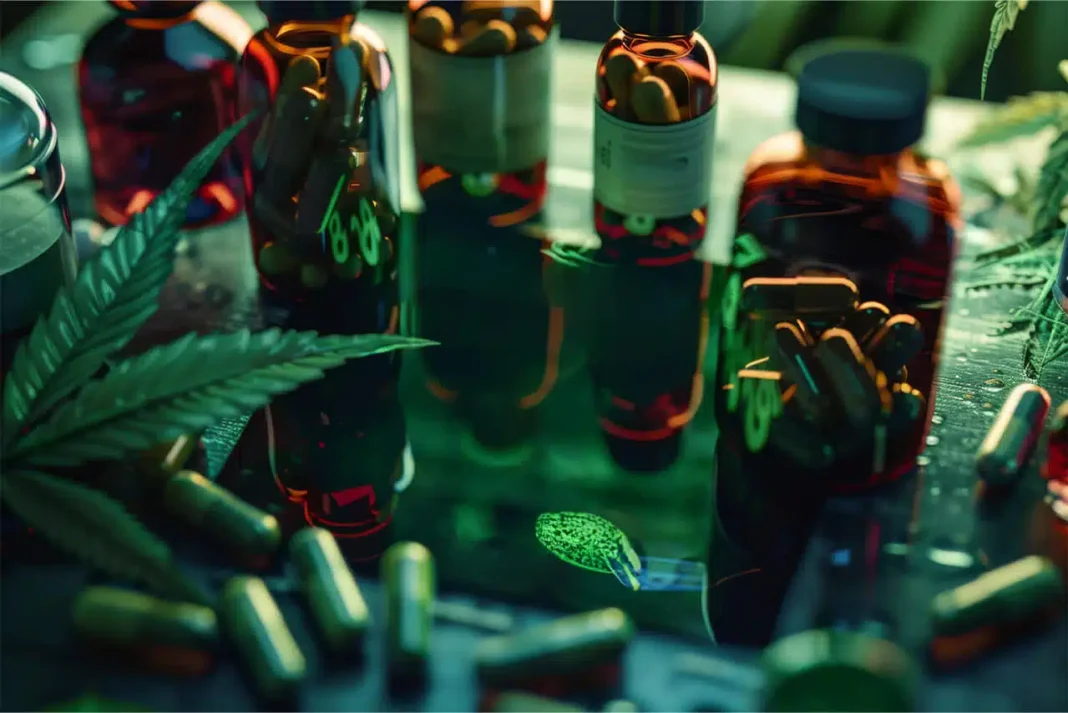Substance addiction is a disorder in which a person begins using a substance due to various psychological or environmental factors, resulting in loss of control over their use, difficulty quitting, developing tolerance, needing more to achieve the same effect, and experiencing severe withdrawal symptoms if this craving is not met. Addiction is not merely a behavioral problem. It also involves pathophysiological impairment of the brain’s reward mechanism and stress response mechanisms, significantly impacting a person’s daily life.
Brain regions that form the neurological basis of addiction include areas such as the prefrontal cortex, ventral tegmental area, and nucleus accumbens. These regions initially provide intense pleasure. However, tolerance develops over time, leading to the same pleasure becoming unattainable, driving the individual to use more substances for the same effect, creating a vicious cycle. In this article, psychological factors such as early traumas, stress, and negative environmental factors that are effective in the emergence of substance addiction and neurobiological mechanisms such as how the dopaminergic pathway is affected by recurrent substance use will be discussed.
Psychological Factors
There are many psychological factors that drive a person to substance use and lead to substance addiction. One of the most important factors is early negative traumas and experiences. Factors such as abuse, neglect, domestic violence, and parental mental distress can lead a person to view substance use as a way of escape later in life. This anxiety-ridden foundation formed in childhood, combined with negative environmental factors (stress, depression, financial difficulties), increases the risk of substance use later in life. While substance use may provide a short-term solution to current problems, it causes much greater harm to their life in the long run and they find themselves trapped in a vicious cycle.
Stress is another factor that drives people to substance addiction. Everyone experiences periods of anxiety in their lives, and this is quite normal. However, some individuals turn to substance use to cope with these negative feelings, seeking momentary relief. Thus, they use substance use as a “coping tool.”
Individuals with disorders such as anxiety, bipolar disorder, and post-traumatic stress disorder (PTSD) may turn to substance use to relieve their symptoms. Those experiencing anxiety may turn to alcohol and drugs to suppress their anxiety. Those experiencing depression may find relief in stimulants to alleviate feelings of unhappiness and lack of motivation. Those experiencing PTSD may resort to substances to neutralize traumatic memories and arousal. In these types of disorders, dopamine, serotonin, and cortisol function imbalanced in the brain. Substances act as a buffer, filling this void in the short term. Therefore, while they may provide a momentary sense of relief and pleasure, long-term use can easily lead to addiction, leading to regular use and dependence (Koob & Volkow, 2016).
Brain Mechanisms
The neurobiological basis of substance addiction can be explained through the brain’s reward circuitry. The ventral tegmental area (VTA), nucleus accumbens (NACC), and prefrontal cortex are crucial in generating feelings of pleasure and reward. Natural rewards, such as eating and social interaction, cause dopamine release at normal levels in the brain. However, addictive substances release far more easily and powerfully than the pleasure provided by these natural rewards, creating addiction.
With repeated use, the brain, in an effort to maintain its balance and reduce hyperarousal, reduces the sensitivity of dopamine receptors. This develops tolerance. With the development of tolerance, the pleasure a person derives from natural pleasures diminishes significantly, leading to the need for higher doses of the substance. When use is stopped, stress systems such as cortisol become overactive, leading to irritability, restlessness, anxiety, and withdrawal cravings. Furthermore, any detail that reminds a person of the substance (place, color, smell) intensely triggers a desire to use it and increases the risk of relapse (Samaha, Khoo, Ferrario, & Robinson, 2021).
Substance addiction is a disease that results from disruptions in the reward mechanism in a person’s brain. Imbalances in the dopamine system lead to addiction over time, creating a vicious cycle. Initially, use is initiated for pleasure and enjoyment. However, this use eventually shifts to avoiding pain and discomfort. Any detail that reminds a person of the substance keeps the person at risk of relapse. Future studies should consider all the psychological, biological, and environmental factors of addiction, and studies should be designed with this multidimensional structure in mind.
References
-
Koob, G. F., & Volkow, N. D. (2016). Neurobiology of addiction: a neurocircuitry analysis. The Lancet Psychiatry, 3(8), 760–773. https://doi.org/10.1016/s2215-0366(16)00104-8
-
Samaha, A., Khoo, S. Y., Ferrario, C. R., & Robinson, T. E. (2021). Dopamine ‘ups and downs’ in addiction revisited. Trends in Neurosciences, 44(7), 516–526. https://doi.org/10.1016/j.tins.2021.03.003


